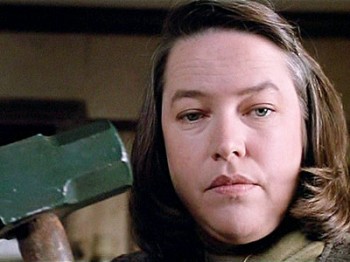Reader, I...
Reader, I…

Tweeted her.1
Translated her.2
Gave in at last, I did indeed.3
Fucked him.6
Shagged him.7
Banged him, and we laughed and sighed and then reminisced.8
Ate an entire cow.14
Marinated it.15
Drank it, and I’d gladly do so again, at the dessert hour, as long as there’s freshly grated cinnamon around.16
Assure you, my duties are those of a grave historian.17
Hope you don’t believe them.18
1 The Telegraph,, “Reader, I Tweeted Her” [source]
2 Global Times, “Reader, I translated her” [source]
3 A Painter’s Camp in the Highlands, And Thoughts About Art, Philip Gilbert Hamerton [source]
4 New York Times, “Reader, I Divorced Her [source]
5 Tablet Magazine, “Jews Biking for the Environment” [source]
6 With This Ring, I Thee Bed, Alison Tyler [source]
7 The Guardian, “Reader, I shagged him” [source]
8 SF Weekly, ““Ex Ed” [source]
9 The New York Times, “Reader, I Dumped Him” [source]
10 The New Republic, “Reader, I Made Him Up” [source]
11 The Chicago-Sun Times, “Death At A Funeral” [source]
12 The Boston Globe, “Love story elicits tears and raises questions” [source]
13 Slate, “Boo!” [source]
14 Seattle Magazine, “Reader, I Ate An Entire Cow” [source]
15 The Independent, “Reader, I marinated it” [source]
16 Slate, “Pisco” [source]
17 The Popular Science Monthly, “My Spider” [source]
18 Letters on Several Subjects, Rev. Martin Sherlock [source]
Previously: It Is A Truth Universally Acknowledged…, On The Internet Nobody Knows You’re A… and A Funny Thing Happened On The Way To…
Elon Green writes supply-sider agitprop for ThinkProgress and Alternet.
Scott LaRock Would Have Been 50 Years Old Today
The late, legendary DJ Scott LaRock was born March 2, 1962. He was working at a homeless shelter in 1984 when he met his future partner, KRS-One, who was a resident there, and started a group, Boogie Down Productions. They had just six-months prior put out their classic debut album, Criminal Minded, when on August 27, 1987, in one of hip-hop’s first great tragedies, LaRock was killed in a shootout in the Bronx. Noah Callahan-Bever wrote a nice story about his life for XXL in 2002.
Yoga, Like Anything, Can Be Bad or Good

I’ve actively avoided reading a lot of the recent news articles and blog posts about the spate of controversies, both trumped-up and real, that have lately befallen the yoga industry. By actively I mean: people send me links to these and I refuse to read them. This is part of a self-awareness practice rooted in Sutra 2.16, which is usually translated along these lines: “The suffering which is yet to come may be avoided.” Of all 196 this is probably the Sutra I think about most often. Are you getting the sense yet that, when it comes to yoga, I’m not exactly an unbiased outside observer?
But maybe my semi-insider status is a good thing? (I have taught yoga on and off since completing a teacher training in 2008 and wouldn’t consider myself part of the “yoga world” or “scene” at all because “scenes” of any nature freak me out, especially ones that might involve kirtans, but I love yoga and am grateful every day for how my teachers have helped me change my brain and body). Maybe it’s actually helpful to have this background, though, when attempting to discern how much of the recent run of bad news is relevant to casual yoga practitioners? In that hope, I steeled myself and dove down into the murk, hoping to emerge from it with some lotus … blossoms … of … wisdom (oy.)
1. Seriously, who at the Times hates yoga? It is a conspiracy.
Yoga Didn’t Get Me Thin Enough For My Wedding, So I Hired A Personal Trainer Instead [Styles, 11/22/11]
Yoga Can Hurt People (Who Practice It Irresponsibly) (NO DUH) [Magazine, 1/5/11]
Yoga Increases Blood Flow To The Genitals (And Everywhere Else) And Started As A Sex Cult [Science, 2/27/12](those two are by the same guy)
oh and
Some People, Obviously An Outlying Minority, Think Yoga Should Be A Competitive Sport [Sports, 3/1/12]
Okay, okay, it’s not a conspiracy. I’m thinking … the Times has trouble with yoga because the Times basically embodies Western linear thought which is based on binaries and absolutes. It needs yoga to be either a spiritual discipline, a workout, a billion-dollar industry, or a sport. But yoga’s sort of all those things, and it’s different things to different people. Far be it from me to say what it “should” be. What it should not be: a profiteering enterprise that injures people by encouraging them to compete with themselves and each other. Luckily, that’s something it rarely is, though an irresponsible student can make even the safest class dangerous for himself by lying to his teacher and himself about his experience and his abilities. But that’s too boring and reasonable to be the focus of an article. (Even … this one!)
Oh and the weight loss thing is just … well, whatever. Styles! We don’t read it to become enlightened.
2. But, okay, that sex scandal thing.
“Why does yoga produce so many philanderers? And why do the resulting uproars leave so many people shocked and distraught?” asked William J. Broad in that Science article. How completely silly. I’d be stunned to learn that there are more “philanderers” “produced” by yoga than by any other workplace or community. People like to have sex, and power differentials (teacher/student, priest/parishoner, boss/employee) are super hot. Yoga’s spiritual focus makes the bad behavior of its handsy gurus distressing, but do you really have to ask why?! No one asks why the uproars over abuse by priests leave so many Catholics shocked and distraught. That’s just sloppy reasoning.
But … but. We expect better from our teachers and leaders, of course we do. It’ll be interesting for anyone who enjoys thinking about human nature to learn the ultimate result of the John Friend story. Short version: a respected teacher and founder of a very popular form of alignment-based yoga, which is also a business (Anusara Inc.) had his sexy Internet dealings leaked by a disgruntled IT staffer. (Don’t disgruntle the IT staffers!) The facts of the situation aren’t yet clear, and so far Friend’s apologies have been tainted by a distressing tendency to devolve into a kind of Newagey doublespeak that makes politicians’ post-damaging-revelation press conferences seem downright straightforward. I’ve been interested to read the perspective of Elena Brower, a Friend acolyte who has cut ties with Anusara. She points out that all humans are fallible, even exalted teachers. This is an obvious-seeming fact that everyone has a weird tendency to forget in the lulls between scandals.
So, to sum up: I’m not sad for yoga. Class attendance seems not to be down. This stuff is worrisome but not as worrisome to New York yogis as the constant threat that state licensing rules will change in ways that will put smaller studios and less rockstarish teachers out of business. It would be cool if the Times would focus on that, but I guess it’s just not sexy.
Photo by istolethetv, via Flickr
Yay, The Slate Book Review
Exciting news for bibliophiles: Slate is launching the Slate Book Review, a monthly supplement “delivering reviews of the newest fiction and nonfiction; essays on reading, writing, and the great (and terrible) books of years gone by; author interviews; videos and podcasts; and much more.” The first edition hits tomorrow, but if the pieces they’ve previewed so far (“Is Jonathan Franzen Too Sympathetic To His Female Characters?”, “Huckleberry Finn: Two Schmucks on a Boat” and “Danielle Steel, American Proust”) are any indication, this thing is going to be a rousing success.
Stephen King Film And Television Adaptations (Excluding The Sequels And Remakes), In Order
by Valerie Temple

52. Trucks
51. The Mangler
50. Sleepwalkers
49. Desperation
48. Grey Matter
47. Ghosts
46. Thinner
45. The Mist
44. Dolan’s Cadillac
43. The Diary of Ellen Rimbauer
42. Riding the Bullet
41. 1408
40. The Night Flier
39. Secret Window
38. Quicksilver Highway
37. Maximum Overdrive
36. Silver Bullet
35. Dreamcatcher
34. Sometimes They Come Back
33. It
32. Nightmares & Dreamscapes
31. The Langoliers
30. Haven
29. The Lawnmower Man
28. Creepshow
27. Salem’s Lot
26. The Tommyknockers
25. Cujo
24. Kingdom Hospital
23. The Dark Half
22. Rose Red
21. The Running Man
20. Graveyard Shift
19. Children of the Corn
18. Bag of Bones
17. Storm of the Century
16. Hearts in Atlantis
15. The Stand
14. Cat’s Eye
13. Christine
12. The Green Mile
11. Dolores Claiborne
10. Firestarter
9. Pet Sematary
8. Apt Pupil
7. The Dead Zone
6. Needful Things
5. Stand by Me
4. The Shawshank Redemption
3. Carrie
2. Misery
1. The Shining
Related: Classic Trash: Pet Sematary
Valerie Temple, former Cooking the Books auteur, programs the movies at an arthouse movie theater in PA. She also dabbles in comedy and likes to dress up like Paula Poundstone in her free time. She’s on Twitter!
Only Fools And Horsegate
You had to know that once the British finally brought back a toff Prime Minister one of his eventual scandals would be called “Horsegate.” It’s just so upper class. Anyway: “David Cameron has been accused of not being straight about his close links with News International after he finally admitted riding Rebekah Brooks’s ex-police horse.” That is a sentence, yes. In related Knifecrime Island equine news: Is this Britain’s tallest horse? Sure, why the hell not.
Robin Thicke Featuring Lil Wayne, "Pretty Lil' Heart"
I watched too much “Growing Pains” when I was a kid to ever hear Robin Thicke sing and not imagine that it’s actually Mike Seaver on the mic. (I watched too much “Growing Pains” as a kid full-stop, I know.) But he has become a real, legitimate R&B; artist — and a good one! He’s always at his best with Lil Wayne, too. Robin Thicke! Who woulda thunke?
Movies Now As Self-Referential As Everything Else
“Film characters who sound suspiciously like film students are becoming increasingly common, and increasingly irritating. Once upon a time, it was a rare treat to hear someone in one film mention another, and it was usually a sign that the character was a metropolitan culture snob, invariably played by Woody Allen. Things started to change in the 1990s, when Quentin Tarantino and Kevin Smith peopled their films with characters who knew as much about pop culture as they did, but their extended riffs on the subtext of ‘Top Gun’ were still the mark of a geeky, alternative sensibility. Not anymore.”
The Members Of 'The Next Bob Dylan' Club
by Josh Lieberman

“There is no way to accurately or adequately laud Bob Dylan. He is the Homer of our time. The next Bob Dylan will not come around for another millennium or two, making it highly unlikely that it will happen at all.” — T-Bone Burnett, foreword to Rolling Thunder Logbook
Critics have always been quick to proclaim someone as the Next Dylan. “No sooner was Dylan Dylan,” says Gene Santoro in Highway 61 Revisited, “than the search was on for the Next Dylan, the New Dylan — a list that, over the decades, accumulated dozens.” Pity the poor soul who writes intelligent lyrics, sings a bit off-kilter, strums a guitar, and — hoist the millstone! — plays harmonica. Meant to be a compliment, the Next Dylan label has traditionally been more of a burden to overcome. Though this “Next Dylan” business may only be lazy journalistic shorthand, or the lame idea of publicist Craig Q. Schlump — or, of course, something originating from fans — it’s still worth taking a look at a few of those who have been so anointed.
Let’s get an absurd one out of the way first. In 1966, Dick Campbell released an album, Dick Campbell Sings Where It’s At, that one could charitably describe as Dylanesque. Or as Allmusic would later put it this one really takes the cake for sheer ill-conceived weirdness.” Possibly the only people who considered Campbell a Next Dylan were a few executives: Mercury Records signed Campbell and produced this rip-off album in an attempt to capitalize on Dylan’s success. While the public didn’t buy it, he’s included here as a rock curio.
There’s room for one more near-parody from the 1960s. When this single from The Mouse and Traps came out, Greil Marcus remembers people asking, “Have you heard the new Dylan?”
Barry McGuire’s “Eve of Destruction” (written by P.F. Sloan, also an occasional Next Dylan) became a massive hit in 1965. On his album of the same name McGuire covers two Dylan songs, “She Belongs to Me” and “It’s All Over Now, Baby Blue.”
David Blue and Dylan were good friends, and Dylan rubbed off on him: “I sounded like [Dylan],” Blue told Melody Maker in 1975, “and didn’t have any idea what I was doing.” More notable than Blue’s music was his acting. Blue shows up in two of the oddest films in rock history: Dylan’s Renaldo and Clara, where he appears as a pinball-playing monologist, and Neil Young’s apocalyptic, Devo-centric Human Highway, in which he plays a milkman.
In the early 1970s, Loudon Wainwright III would joke about being a member of “The New Bob Dylan Club,” which included some of the fellows you’ll meet below. Later on Wainwright wrote the humorous tribute “Talking Bob Dylan.” “We were new Bob Dylans, your dumbass kid brothers,” sings Wainwright. “Bein’ the new you is one hell of a job.” Wainwright also sings about Self Portrait, Dylan’s reviled 1970 album, “Well, it was an interesting effort.” (If you’re into Dylan this is the sort of thing you find funny. If not, sorry, and we can just move along.)
John Prine was one of those Wainwright counted as a member of the Dylan Club. Dylan himself is a fan, heaping praise on Prine in a 2009 interview: “Prine’s stuff is pure Proustian existentialism. Midwestern mindtrips to the nth degree. And he writes beautiful songs. I remember when Kris Kristofferson first brought him on the scene. All that stuff about ‘Sam Stone’ the soldier junky daddy and ‘Donald and Lydia,’ where people make love from ten miles away. Nobody but Prine could write like that.”
You may have heard of Bruce Springsteen. His career requires little analysis here other than to say that if his second album had continued in the vein of his first, 1973’s Greetings From Asbury Park, N.J., he might not have overcome his universally applied Next Dylan label. Springsteen’s second album, The Wild, the Innocent & the E Street Shuffle, drew comparisons to Astral Weeks — so now he was not only the Next Dylan but the Next Van Morrison as well. (That Springsteen was making appearances wearing the same shirt as Dylan, as seen in the video below, probably did little to quell comparisons.)
When Elliott Murphy’s first album came out in 1973, Rolling Stone critic Paul Nelson called it “easily the best Dylan LP since John Wesley Harding.” Rolling Stone took it a step further and titled Nelson’s review, “He’s the Best Dylan Since 1968.”
“People will tell you that [Steve] Forbert sounds like the early Bob Dylan,” Nelson wrote in a later piece (collected in Everything Is An Afterthought), “but even if they’re right, they should be ignored. In 1979, such an approach is misleading and won’t get you to the heart of this or any other matter. Anyway, people will tell you anything.” (Fun bit of musical trivia: Nelson nicked that “heart of this” line from Leonard Cohen’s “Stranger Song.”)
Plenty of fans were probably ready for another Next Dylan in the early 1980s, what with Dylan in the middle of his born-again phase. Enter Willie Nile.
You don’t hear too many women labeled the Next Dylan, but certainly a few critics have pointed to Patti Smith. It’s probably one of the weaker comparisons. While it’s true that when Smith burst on the scene she was an instant poet laureate, her music wasn’t all that similar to Dylan’s. Still, I welcome any excuse to listen to her excellent cover of Dylan’s “Changing of the Guards,” a song that merits inclusion in any critic’s list of Ten Great Yet Truly Bizarre Dylan Songs.
A few years ago the Next Dylan label was mentioned in every conversation about Swedish songwriter Kristian Matsson, who despite being only about as tall as this horse records under the name The Tallest Man on Earth.
Of course there are many more. But then there is really only one.
Related: The Forgotten Music Of Ronnie Lane
Josh Lieberman would never want to belong to any club that would have someone like him for a member.
